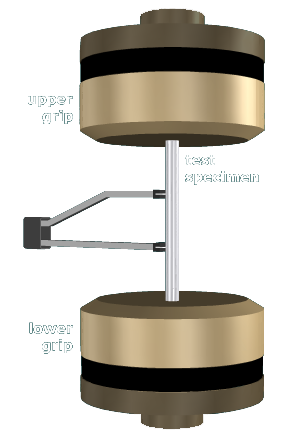
Several types of grips are commonly used, and often the most appropriate grip depends on the specimen being tested.
For plain round or flat specimens, wedge-type grips are often used. The wedges are used in pairs that ride in a holder. The wedges have teeth that bite into the specimen. The tension force applied to the specimen drives the wedges closer together, increasing the clamping force on the specimen.
More sophisticated grips use fluid pressure to actuate the wedges and increase the holding power of the grips.